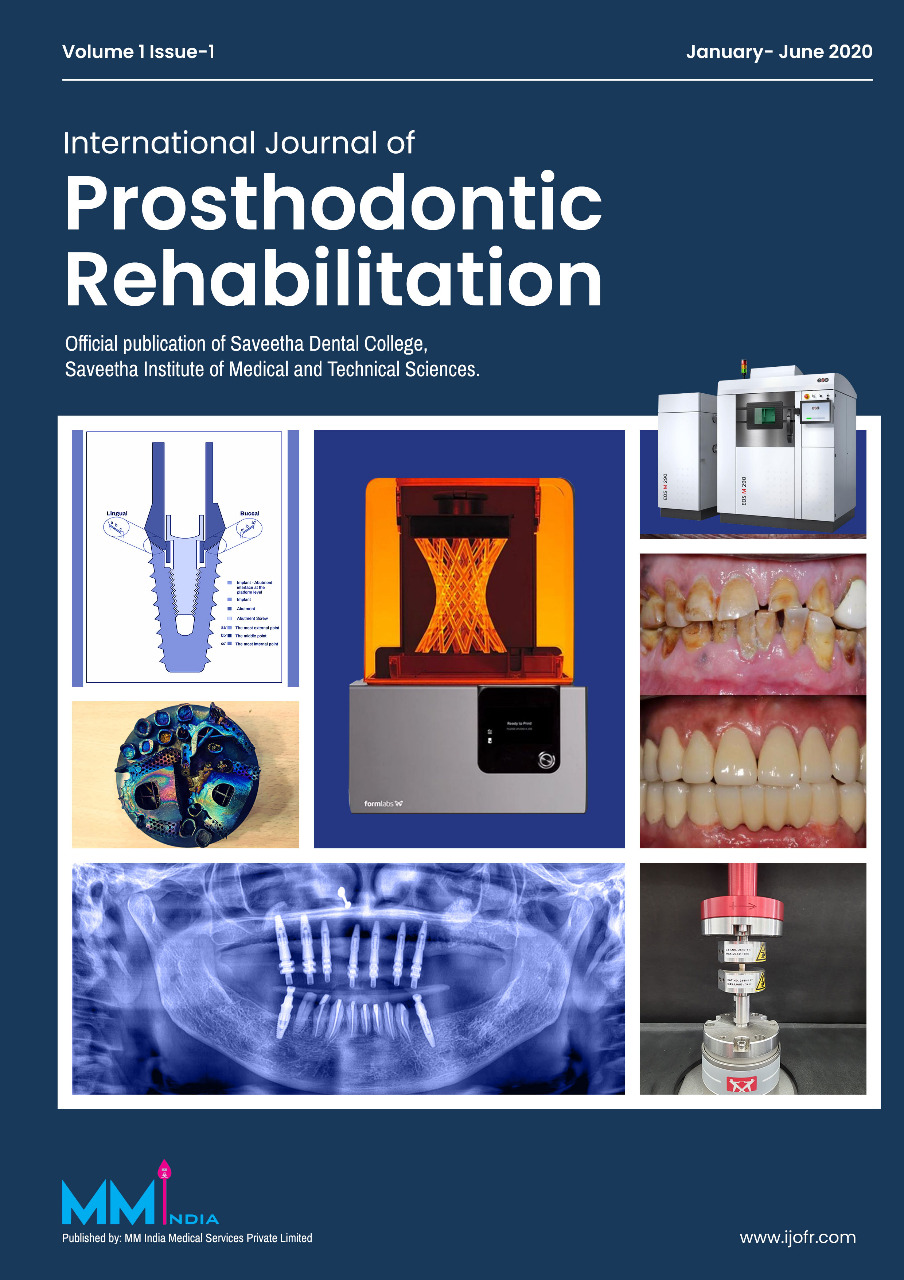LOADS IN DENTAL IMPLANTS
Short Communication
DOI:
https://doi.org/10.56501/intjprosthorehab.v1i1.127Keywords:
Dental Implants,Forces,Movements in Dental Implants,Load Delivery on Dental Implants,Impact Loads.Abstract
Dental implants undergo occlusal loads when placed in occlusion; such loads may vary dramatically in magnitude, frequency, and duration depending on the patient’s parafunctional habits. A force was described by Sir Isaac Newton in 1687 in what is now referred to as Newton’s laws of motion. In his second law, Newton stated that the acceleration of a body is inversely proportional to its mass and directly proportional to the force that caused the acceleration. This law is expressed as F = ma.A force applied to a dental implant is directed clinically along loading axes that exist in implant dentistry: mesiodistal, faciolingual, and occlusal apical. Forces may be described as compressive, tensile, or shear. The implant body design transmits the occlusal load to the bone. Threaded or finned dental implants impart a combination of all three force types at the interface under the action of a single occlusal load.Cylinder implants in particular are at highest risk for harmful shear loads at the implant-to- tissue interface under an occlusal load directed along the long axis of the implant body.Hence, cylinder implants require a coating to manage the shear stress.A load applied to a dental implant may induce deformation of the implant and surrounding tissues. Biological tissues may be able to interpret deformation or a manifestation thereof and respond with the initiation of remodelling activity.The greater the magnitude of stress applied to a dental implant system, the greater the difference in strain between the implant material and bone. In such cases, the implant is less likely to stay attached to the bone, and the probability of fibrous tissue ingrowth into the interfacial region to accommodate the range of difference becomes greater. Moment of force or torque is the rotational equivalent of linear force. Torque can act on the tooth/dental implant in three different planes i.e Mesio-distal plane, Facio-lingual plane, Occluso-apical plane. These are called moment arms. These moment arms can also be clinically correlated as occlusal height, cantilever length, and occlusal width.

Downloads
Published
How to Cite
Issue
Section
License
Copyright (c) 2020 Maaz Vohra, Shalini A.

This work is licensed under a Creative Commons Attribution-NonCommercial 4.0 International License.
Attribution-NonCommercial 4.0 International (CC BY-NC 4.0)
- Share — copy and redistribute the material in any medium or format
- Adapt — remix, transform, and build upon the material
The licensor cannot revoke these freedoms as long as you follow the license terms.
Under the following terms:
-
Attribution — You must give appropriate credit, provide a link to the license, and indicate if changes were made. You may do so in any reasonable manner, but not in any way that suggests the licensor endorses you or your use.
-
NonCommercial — You may not use the material for commercial purposes.
- No additional restrictions — You may not apply legal terms or technological measures that legally restrict others from doing anything the license permits.
Notices:
- You do not have to comply with the license for elements of the material in the public domain or where your use is permitted by an applicable exception or limitation.
- No warranties are given. The license may not give you all of the permissions necessary for your intended use. For example, other rights such as publicity, privacy, or moral rights may limit how you use the material.

